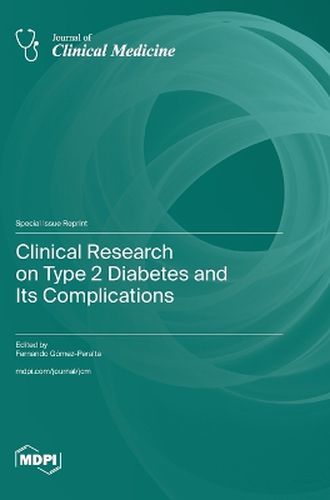Readings Newsletter
Become a Readings Member to make your shopping experience even easier.
Sign in or sign up for free!
You’re not far away from qualifying for FREE standard shipping within Australia
You’ve qualified for FREE standard shipping within Australia
The cart is loading…






This title is printed to order. This book may have been self-published. If so, we cannot guarantee the quality of the content. In the main most books will have gone through the editing process however some may not. We therefore suggest that you be aware of this before ordering this book. If in doubt check either the author or publisher’s details as we are unable to accept any returns unless they are faulty. Please contact us if you have any questions.
The huge prevalence of type 2 diabetes is a leading human and economic concern worldwide. The diagnosis code of type 2 diabetes includes multiple clinical phenotypes showing different degrees of obesity, fat distribution patterns, types of dyslipidemia, and characteristics of insulin resistance syndrome. In addition, subjects with type 2 diabetes could develop different clinical trajectories, with age being a critical factor in progression. The chronic complications of type 2 diabetes are a major cause of mortality and disability, and are ranked in the top places in western countries' scores. The pathophysiological heterogeneity of type 2 diabetes is not captured by the current classifications and guidelines. The potential for diabetes progression and complications developing is different depending on the type 2 diabetes cluster, which is mostly regardless of the degree of glycemic control. However, the impact on quality and life expectancy with the current therapeutic approach is not always the same for every individual. Clinical research is the key to reducing the burden of diabetes. New basic, digital, and clinical approaches are obtaining useful knowledge and designing more individualized interventions to prevent, track, and treat diabetic complications. This Special Issue is a clear reflection of this methodological evolution.
$9.00 standard shipping within Australia
FREE standard shipping within Australia for orders over $100.00
Express & International shipping calculated at checkout
This title is printed to order. This book may have been self-published. If so, we cannot guarantee the quality of the content. In the main most books will have gone through the editing process however some may not. We therefore suggest that you be aware of this before ordering this book. If in doubt check either the author or publisher’s details as we are unable to accept any returns unless they are faulty. Please contact us if you have any questions.
The huge prevalence of type 2 diabetes is a leading human and economic concern worldwide. The diagnosis code of type 2 diabetes includes multiple clinical phenotypes showing different degrees of obesity, fat distribution patterns, types of dyslipidemia, and characteristics of insulin resistance syndrome. In addition, subjects with type 2 diabetes could develop different clinical trajectories, with age being a critical factor in progression. The chronic complications of type 2 diabetes are a major cause of mortality and disability, and are ranked in the top places in western countries' scores. The pathophysiological heterogeneity of type 2 diabetes is not captured by the current classifications and guidelines. The potential for diabetes progression and complications developing is different depending on the type 2 diabetes cluster, which is mostly regardless of the degree of glycemic control. However, the impact on quality and life expectancy with the current therapeutic approach is not always the same for every individual. Clinical research is the key to reducing the burden of diabetes. New basic, digital, and clinical approaches are obtaining useful knowledge and designing more individualized interventions to prevent, track, and treat diabetic complications. This Special Issue is a clear reflection of this methodological evolution.